For several years now, I’ve been exploring ideas around ritual and repetition, using restrictions as a freedom and aiming to transform in the process. I set up pre-prescribed sequences of events, such as only allowing myself to make a certain series of marks in a certain order, and these have helped me take myself out of the equation for long-enough to let the transformation from raw materials to artwork happen. Getting out of my own way, so to speak!
The ideal state for many artists when they are working is when they can enter a state of flow – one where time, space and everything else melts into the background and they are just making, completely absorbed in what they are doing, allowing themselves to become a sort of channel for whatever creative energy or force they use. You can get into this state in many ways – via scribbling, sketching, chanting, dancing, whatever it takes to turn your mind off for a while and allow your hands to take over. For me, I’ve been using repetition to help.
Labyrinths
Labyrinths are a perfect form for me to continue this exploration. Their restrictions include their deceptively ‘simple’ structure – that of pathways and walls with a goal at the centre – and also their single path format. Unlike a maze, you can’t get lost in a labyrinth.
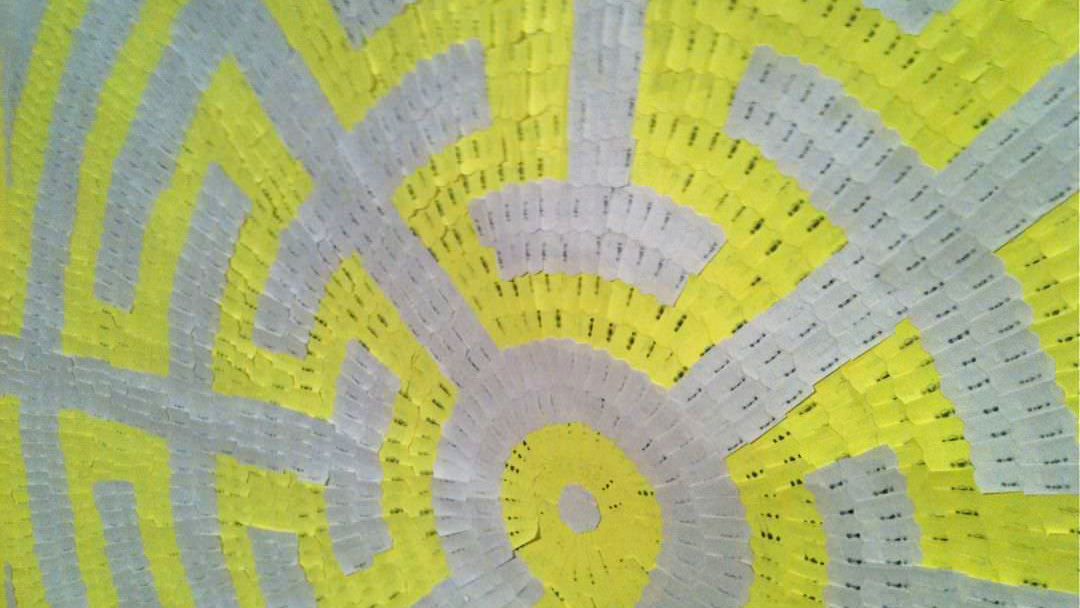
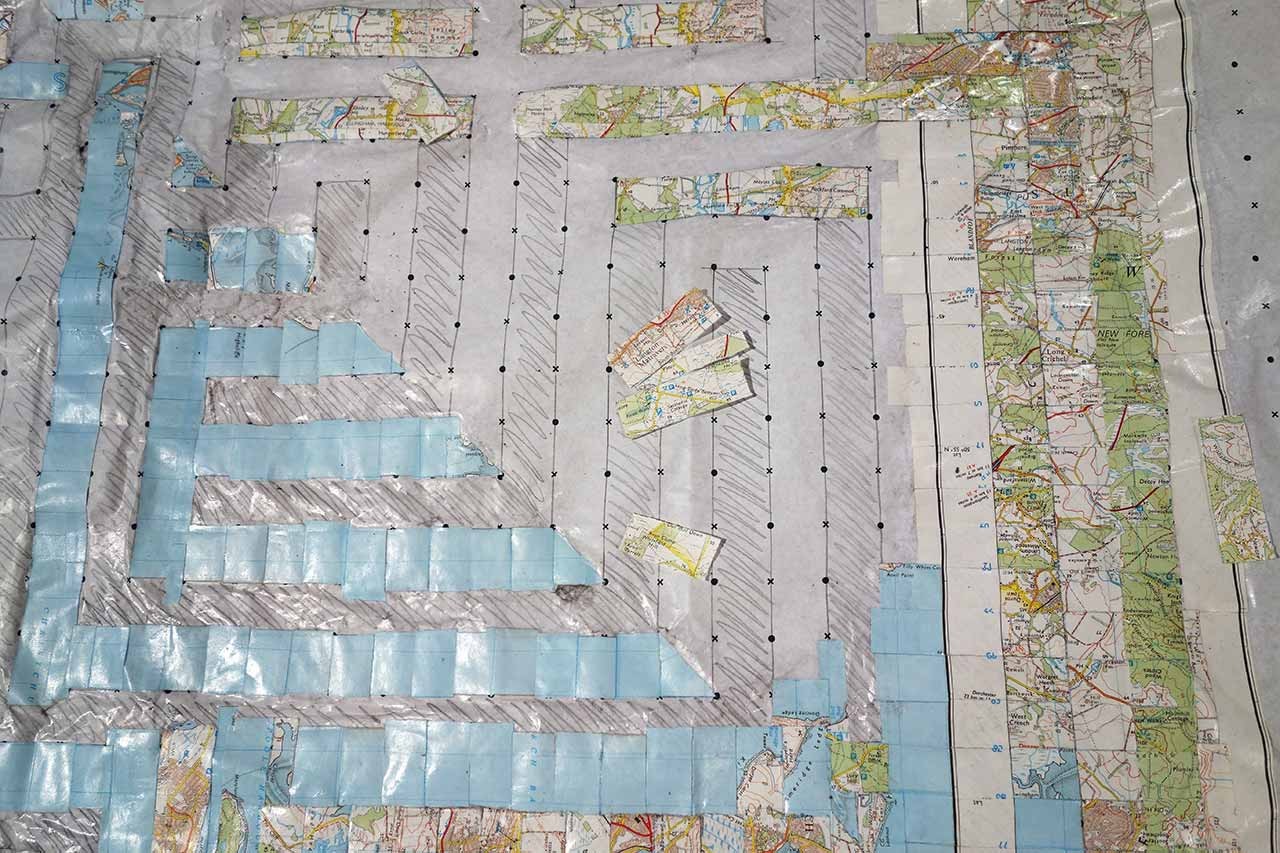
In both two dimensions and in three, labyrinths can be experienced as tools, as games and as sacred spaces.
In this series, labyrinths function as the bounding box for each piece, the container within which things can happen.
For me, they help re-map and explore new territory – which seems both unknown and somehow familiar at the same time.
Loop-Backs
Though the outside and inside of each piece is clearly defined, each one is also expansive. Instead of getting from A to B in a direct way, when you step into a labyrinth you walk in coils. The distance stretches out inside all those turns of direction and intentional loop backs.
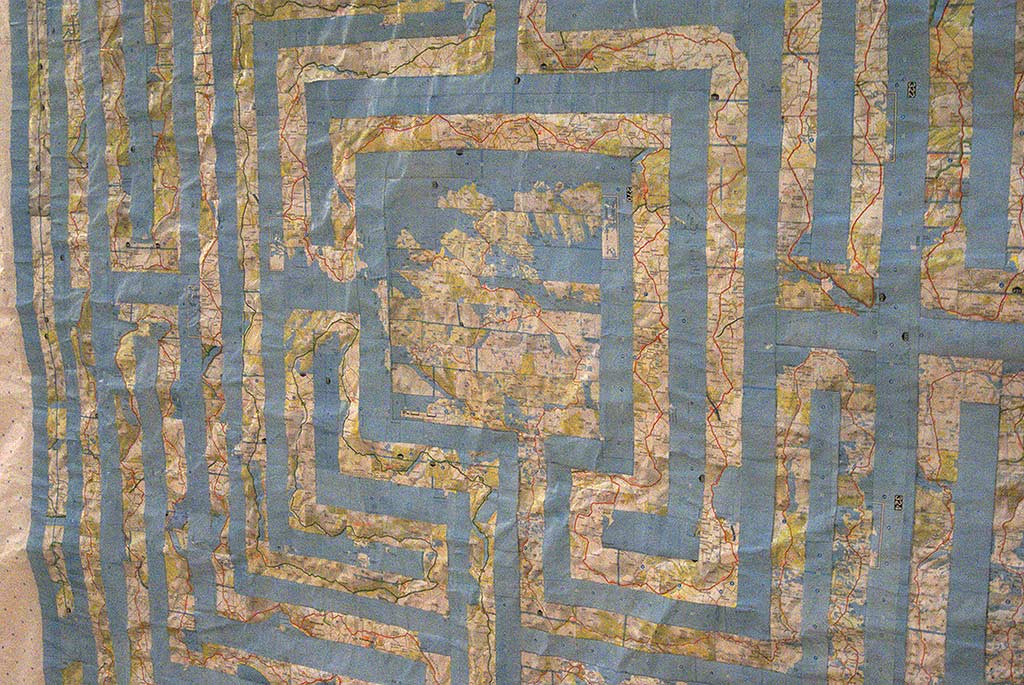
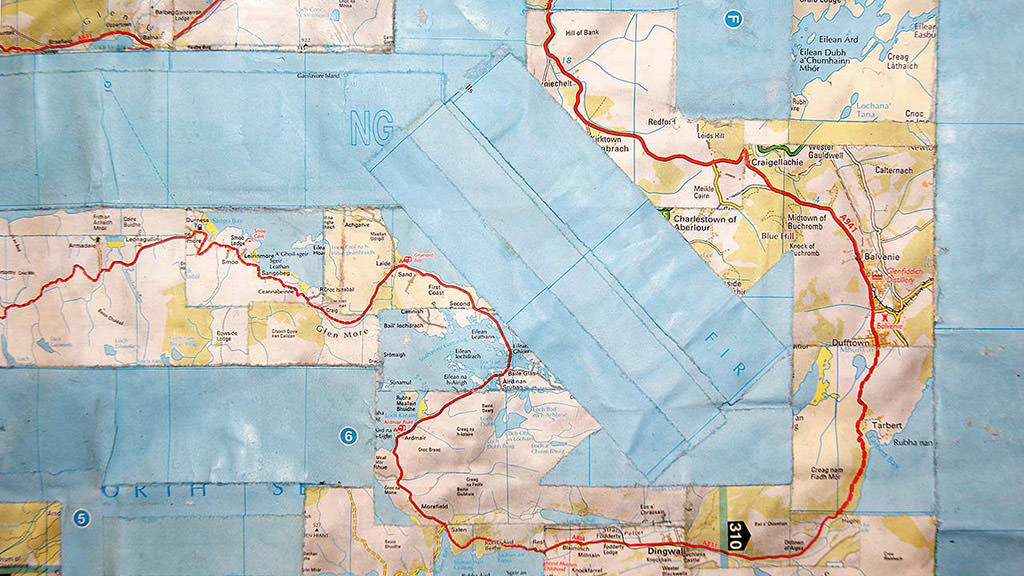
At times on the path, the walker is physically deep, so very close to their goal. But then their journey takes a single turn which pushes them right out to the edge again. Depending on the walker’s state of mind, these tricks of orientation can be fun or frustrating and everything in between.
Pathways
- Does mapping out the whole contents of a book on a path translate it for us in some way?
- What else are we now aware of after ‘walking’ these paths?
- Can we actually lose ourselves in there?
- Is the transformation contained inherently within the labyrinth or in our own individual experience of it?
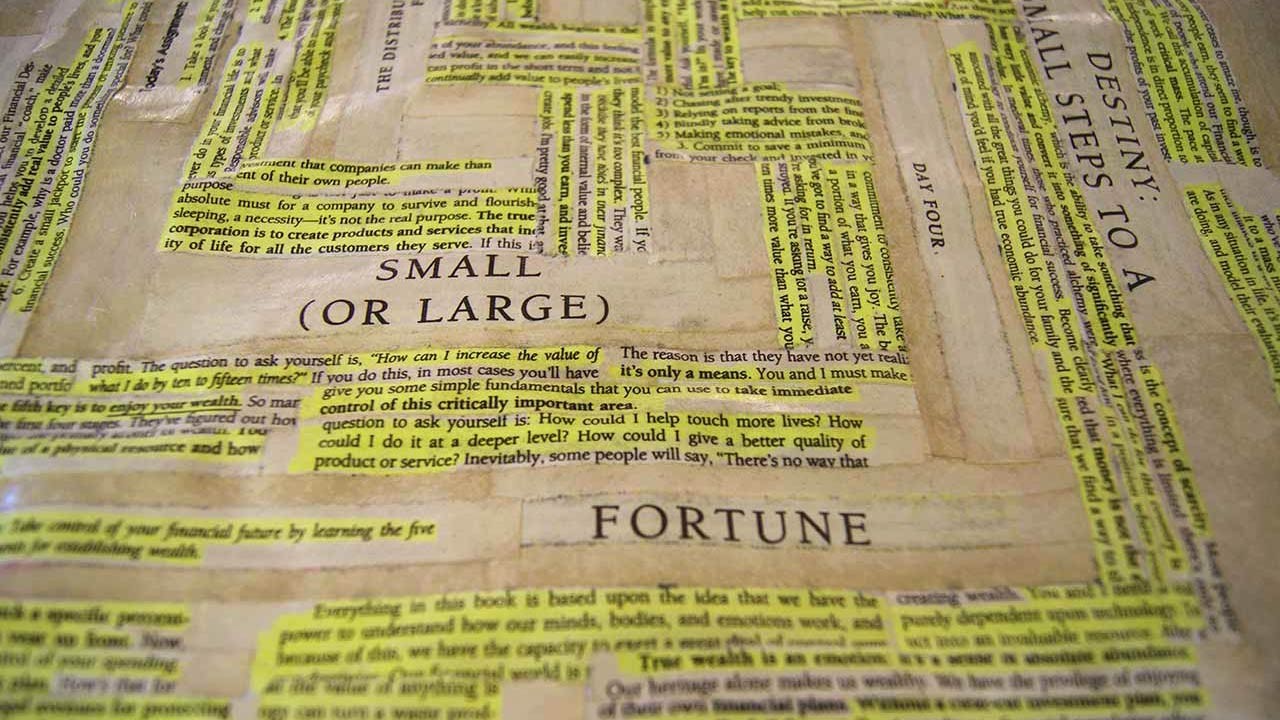
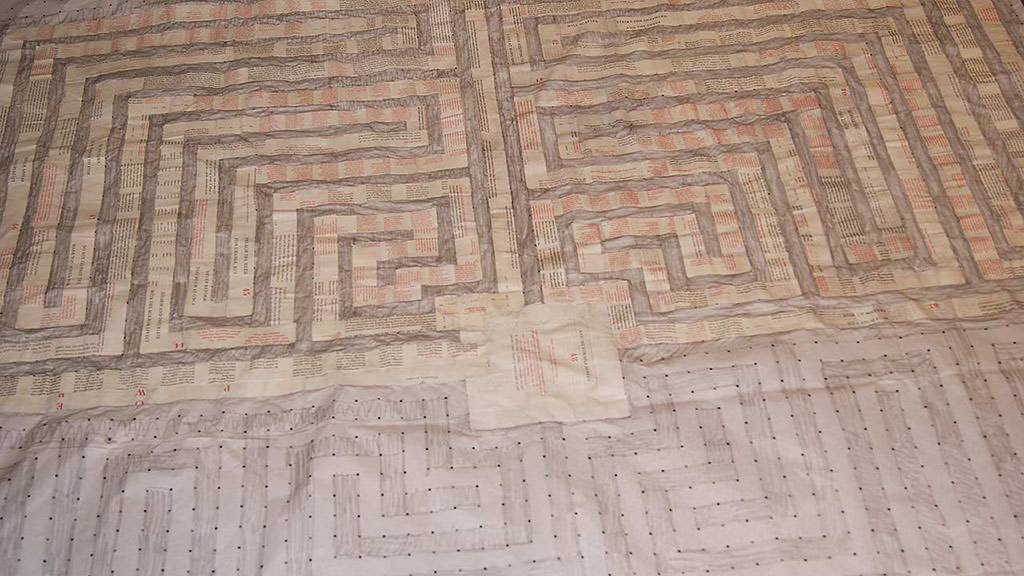
As these are flat 2-dimensional paperworks, their presence is fundamentally different than the 3-dimensional ‘real thing’. Even so, some of them are larger than me or the next person.
They are plans, maps, guides.
In 2-Dimensions or 3?
- Do they belong on the floor, like the labyrinth at Chartres?
- Would a scale model help?
- Or is the next step to build one of these imaginary places so you can actually walk in that territory?

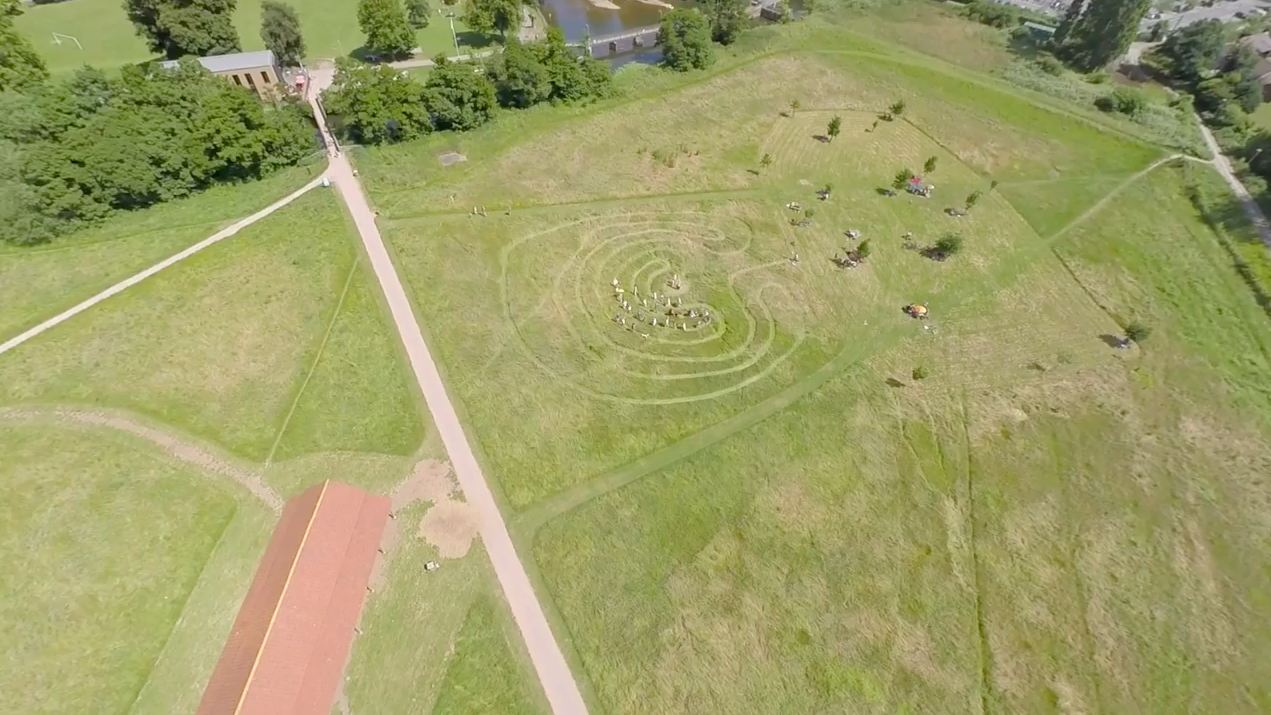
Taunton
This year, I’ve been fortunate enough to have the opportunity to test this out at scale. During a residency for Taunton Deane Borough Council in Somerset, together with fellow artist-in-residence Christopher Jelley, we created 2 labyrinths. We cut the first one into the long grass in Longrun Meadow – it’s 20m in diameter!
It was part of ‘The Great Get Together’ in June, inspired by Jo Cox MP… and then we mowed a slightly smaller (10m diameter) grass labyrinth in Lyngford Park. This was part of ‘Pride in Priorswood’ a summer-long programme of community events in North Taunton.
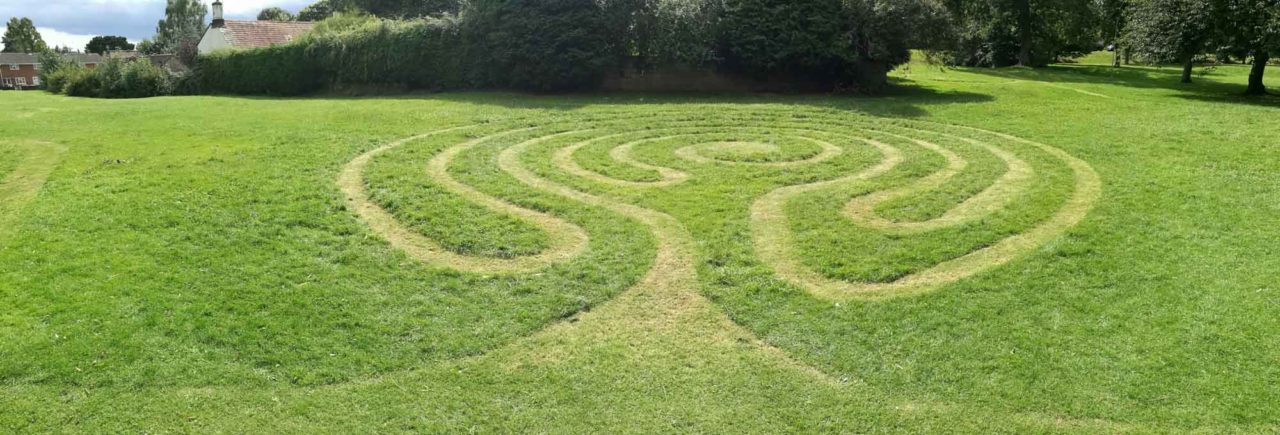
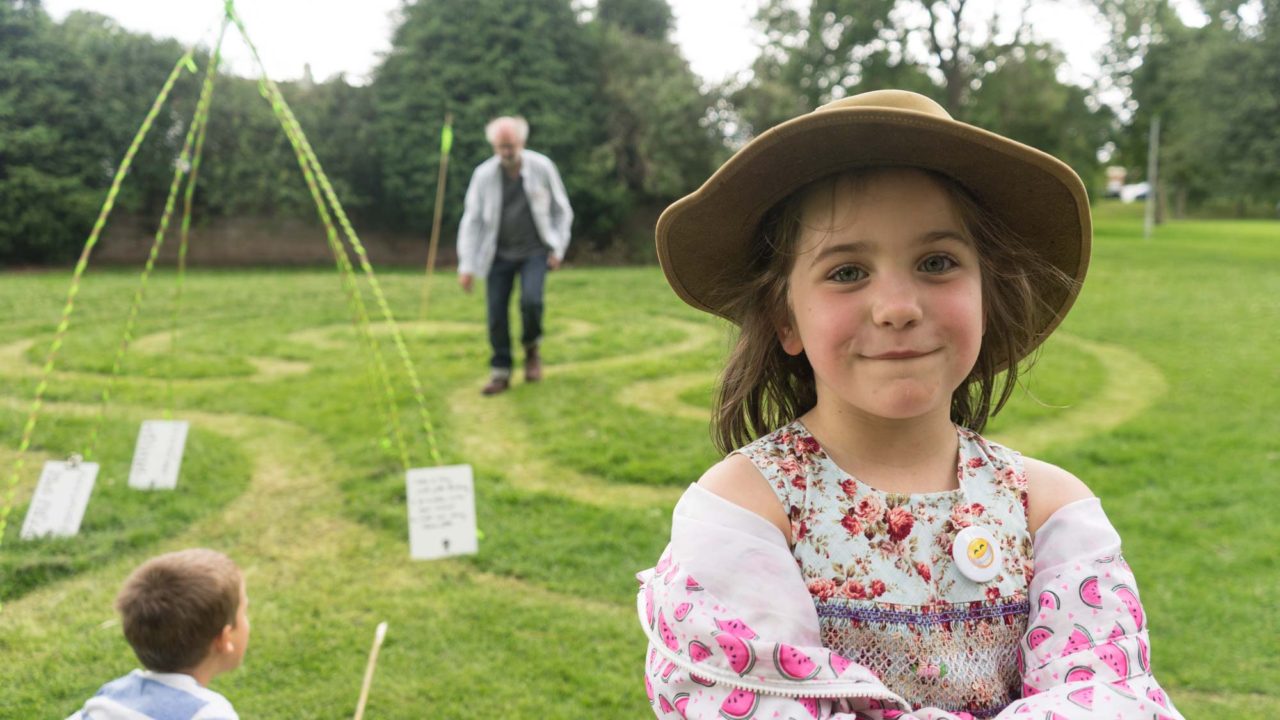
By now, a few hundred local residents and visitors have walked (and run, hopped and skipped) through both of them. We’re now working on an imaginary proposal for a series of physical ‘Brexit’ labyrinths on British Islands.
Now I’m working within a whole different set of grids, map references and possibilities…
